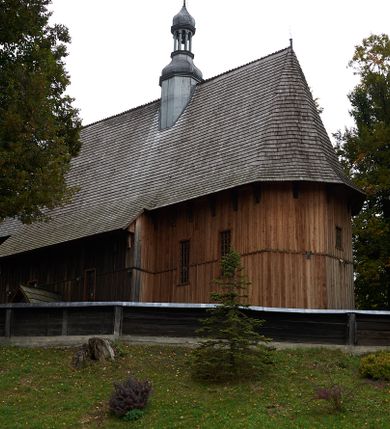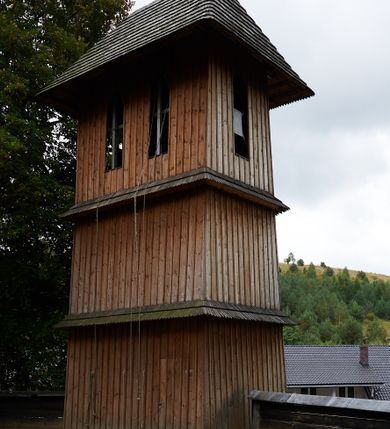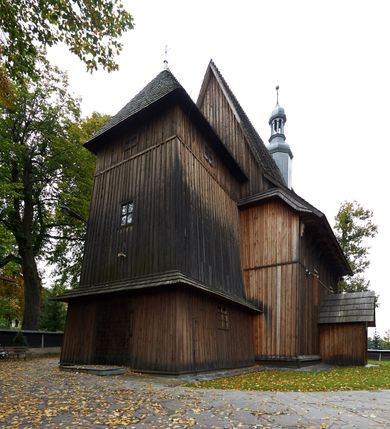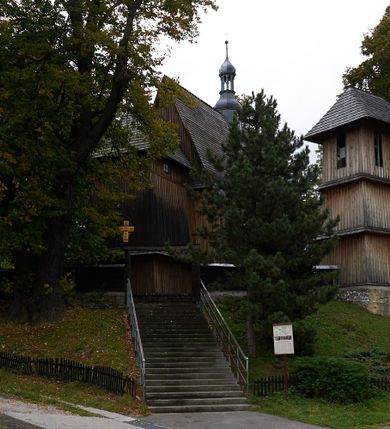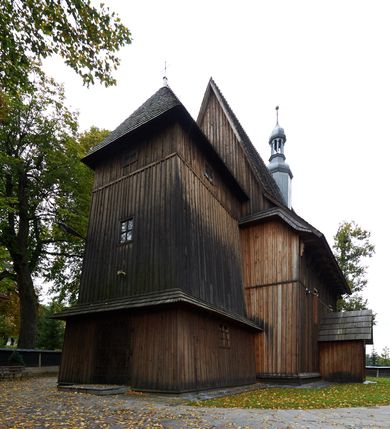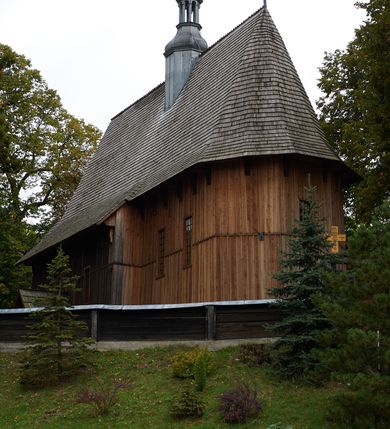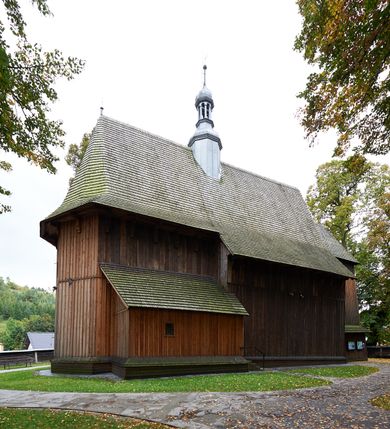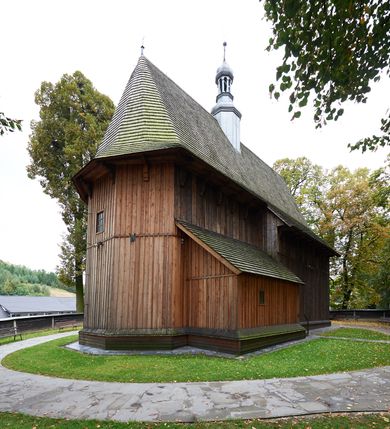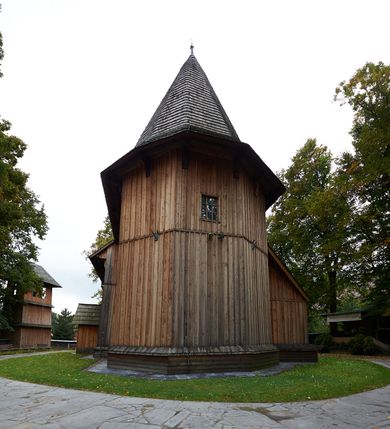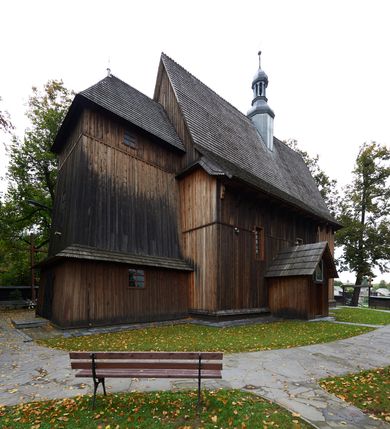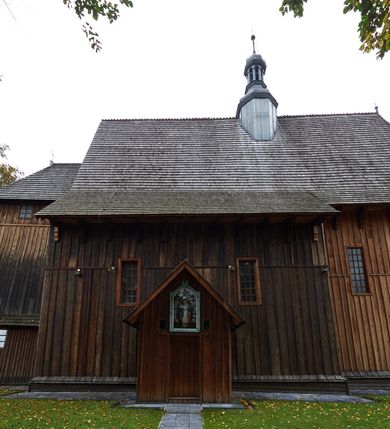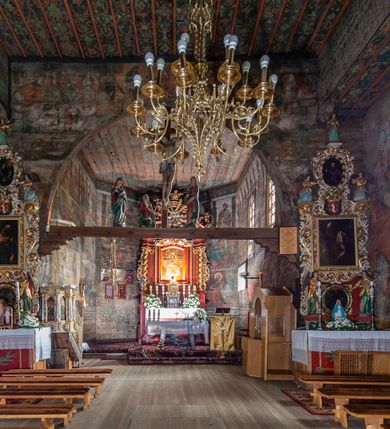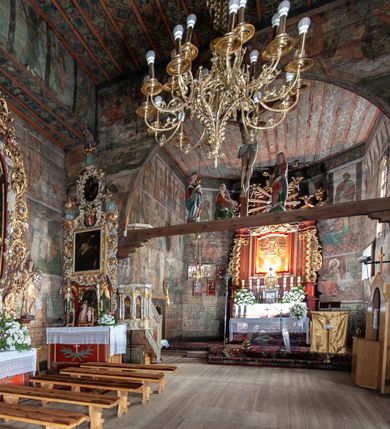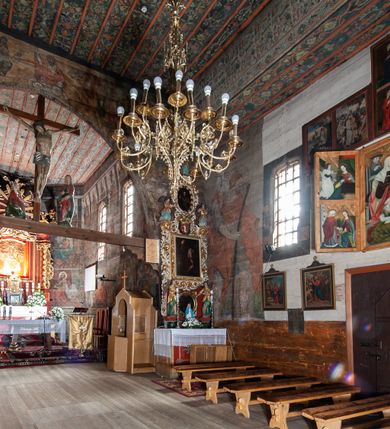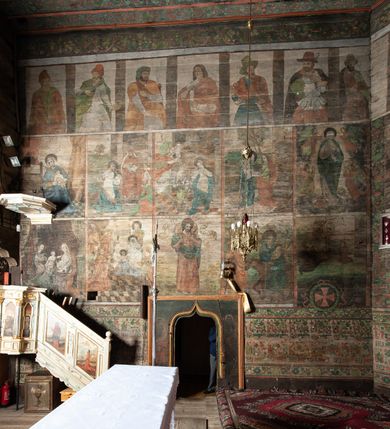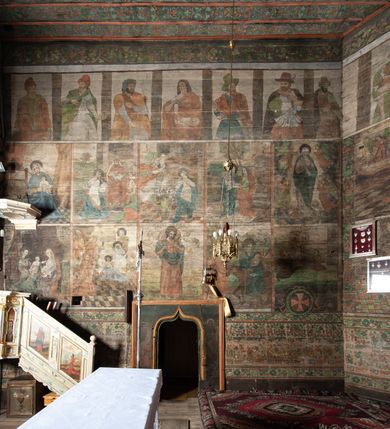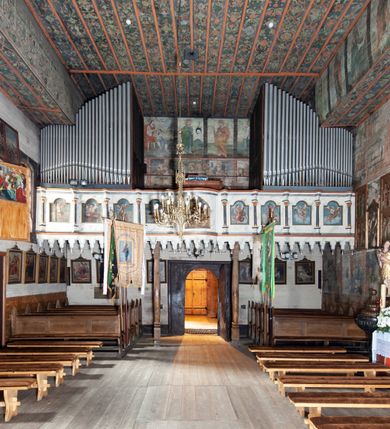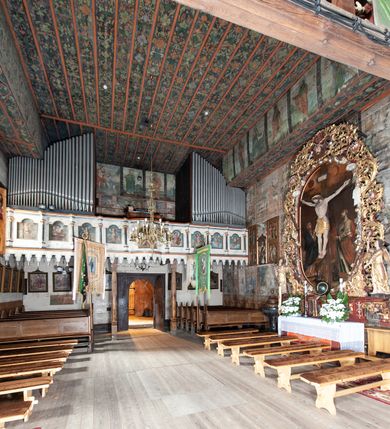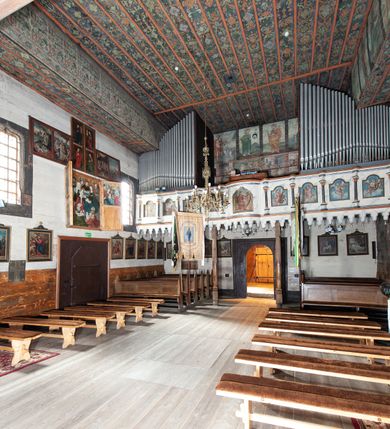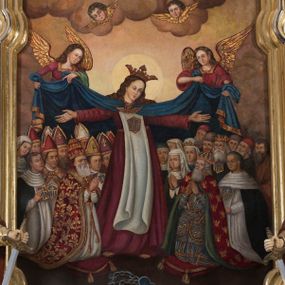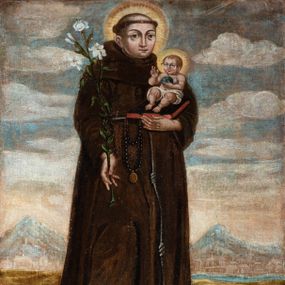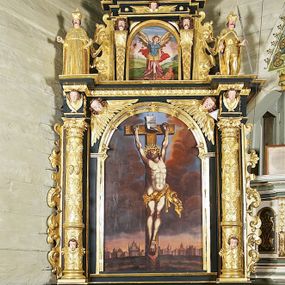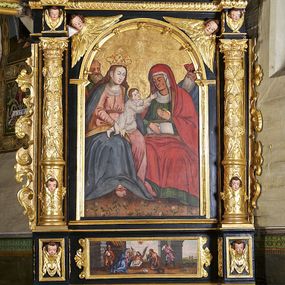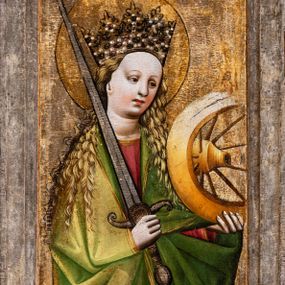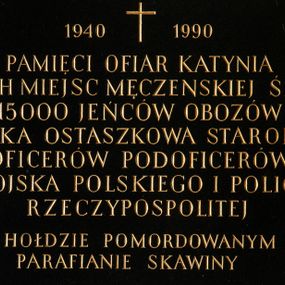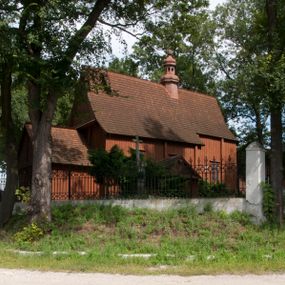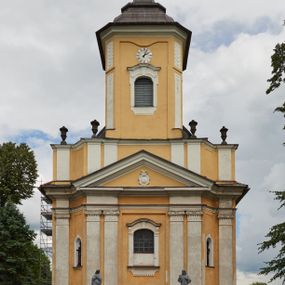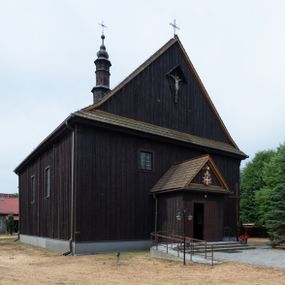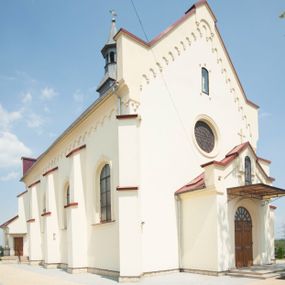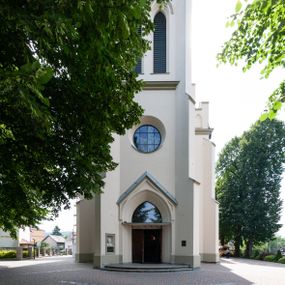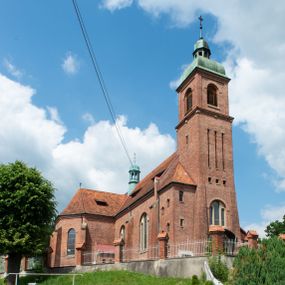
Church of the Nativity of the Blessed Virgin Mary in Racławice Okulskie
Place
Racławice Olkuskie
Parish
Nativity of the Blessed Virgin Mary parish in Racławice Olkuskie
Identifier
DZIELO/13358
Amount
1
Catalogue note author
Maria Działo
History of work
The construction of the church dedicated to the Nativity of the Blessed Virgin Mary in Racławice commenced in 1511, in the location of the former temple - also wooden, mentioned in the years 1325-1327. The present church was consecrated by Mikołaj Oborski, a suffragan bishop, on 7 June 1622. An interesting element of the church, unfortunately not preserved, were the so called arcatures, these are arcades surrounding the church. The church was described for the first time in the visitation records of 1598 carried out by father Krzysztof Kazimierski. The protocol recorded, among others, three altars, the Crucifixion Group on on a rood beam, three bells and bell tower. The next visitation took place in 1602 (of bishop Bernard Maciejowski), which mentioned "arcatures". During the following visitation in 1611, carried out by father Piotr Skidziński, a pulpit was noted for the first time. 1632 was an important date for the church. It was then, when father Jakub Zardecki funded a bell with an inscription: „Christus Rex fortis venit in pace et Deus homo factus est actore M. Jacob. Zardecki hoc opus fieri cur. sumptibus Martini Marek Anno a Partu Virginis 1632 die 9 octobr. par. Racł.”. In 1666, father Krzysztof Tyliszowski brought the miraculous painting of Madonna and the Child from Olkusz, which after a short period of time was placed in the high altar where it was quickly surrounded with cult. In the 18th century, the furnishings of the church was expanded by three side altars of (St. Andrew, St. Peter and Crucifixion) from the foundation of father Andrzej Strzałkowski, the high altar of Virgin Mary from the foundation of father Jakub Kossecki, as well as a new baptismal font and stoup. In 1938, Antoni Witrowski described the church with these words "It is an absolute museum of art, worth seeing and the most thoughtful care". Undoubtedly, the church in Racławice has rich furnishings originating from different periods (represent different styles). Two sculptures and a pair of wings of the triptych are the oldest works of art which probably comes from the furnishings of the first church. The first sculpture is a wooden statue of a saint bishop from around 1400, which was donated to the Museum of the Jagiellonian University in Cracow. The second one is a sculpture of Madonna and the Child, also from around 1400, transferred to the Archdiocesan Museum of Cardinal Karol Wojtyla in Cracow. It belongs to the Cracovian type with clear features of French Madonnas from the 16th century. The third work of art, probably preserved from the original church decoration constitute the wings of the triptych from 1473 from the foundation of father Jan Żak from Zawada. There are representations of holy virgins: Catherine, Margaret, Dorothy and Barbara on the obverses of both wings, and the scene of Annunciation on the reverse side. Other valuable works of art include the painting of Saint John the Merciful surrounded by beggars and cripples from the 16th century and triptych of the Holy Family from the beginning of the 16th century. Their reproductions are located in the church, and the originals were put in deposit to the Archdiocesan Museum of Cardinal Karol Wojtyla in Cracow. In addition, the oldest furnishings of the church include: winds of the polyptych of Holy Virgins and the scene of Passion from the end of the th century depicting St. Ursula and Catherine, Margaret, Agnes, Dorothy and Barbara, Helena and Apollonia. On the reverse side, there are the scenes of: Flagellation, Crowning with the Crown of Thorns, Crucifixion, Resurrection, as well as two fields of the triptych from the 16th century. The first field depicts the Agony in the Garden of Gethsemane and the scene of Taking of Christ, and the second one shows Pentecost and Ascension. The 17th century polychrome comes from renaissance period and it depicts Passion and Marian scenes, as well as images of saints. The Baroque era is represented in the church with richly decorated side altars and high altar with the representation of Madonna and the Child, famous for its graces and miracles. In the middle of the church there is a crypt, relics from which were moved to the crypt located at the southern entrance to the church in 1751 and 1768. Until 1841, the deceased were buried within the church, however no traces after the burials have been preserved, except for one epitaph plaque of nine-year-old Franciszka Pieniążek from 1828, painted on a structural beam, currently covered with boards. The church was renovated many times. In 1813, a new roof was mounted and the church was re-covered with arcatures which "at the same time became suitable for processions in the case of bad weather". Subsequent renovations were carried out in the years: 1830, 1867-1872 and 1941-1943 during which the roofing was also replaced, new fence was built around the church, fourteen wooden pews and five confessionals were acquired, organ was repaired and concrete steps were built on the sides of the church. A thorough renovation of the church was carried out in the years 1960-1962, during which part of foundations and roof framework were replaced and the whole temple was covered with shingles. In addition, the cemetery was levelled and concrete pavement was built around the temple. In 1963 the shingle covering on the bell tower and sacristy were changed and marble floor in the church was replaced with a wooden one. Nevertheless, the bell tower, due to its poor condition was dismantled and replaced by an iron structure made of railway rails in 1965. It was planned to shore it up (as it "must be covered, adapted to the style of the church"), what took place not until 2007. In the years 1970-1971 the ridge turret for a bell tower was renovated together with replacement of metal cover. In recent years, the windows have been replaced and the church has been shored up (2007) and the stairs at the main entrance has been created (2009). During the renovation in 2007, the following inscription was discovered on one of the structural beams of the eastern wall: "MARTINUS IOSEPHUS / KATAZYNSKI" and "ALBERTUS". Probably, they were the builders of the church. In the vicinity of the temple there is a missionary cross from 2010, which perhaps replaced the previous, not preserved cross from 1918.
Abstract
The church of Nativity of the Virgin Mary, construction of which started in 1511, constitutes one of the greatest groups of late-gothic wooden temples in Lesser Poland and it was preserved in unchanged, original architecture. It is a model example of a gothic variant carried out according to the truss and rafter system The shape of the solid itself and architectonic detail appear to have some gothic stylish features, which is proven by application of towering proportions and gothic architectonic elements that stand out in terms of: pointed chancel-arch opening, portal framing and windows closed with pointed arch or in the so called "ogee arch" and decorative profiles of carpenter's details. The church in Racławice constitutes a special resource of artistic furnishing of the interior that corresponds to changes in European art, from gothic to modern times. Significant historical and artistic values may be found in all gothic sculptures and fragments of triptychs, and also baroque altars from the interior design of the temple.
Other works from this place
Similar works
How to cite?
Maria Działo, "Church of the Nativity of the Blessed Virgin Mary in Racławice Okulskie", [in:] "The Sacred Lesser Poland Heritage", 2026, source: https://sdm.upjp2.edu.pl/en/works/church-of-the-nativity-of-the-blessed-virgin-mary-in-raclawice-okulskie
